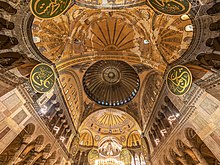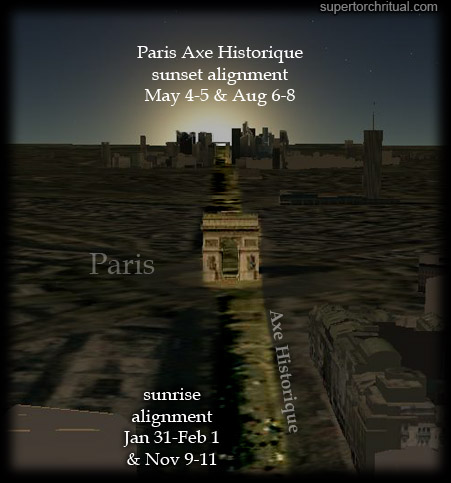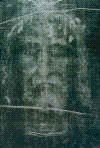|
|
General: TITO MARTINEZ Y SU CRIPTOCATOLICISMO
Escolher outro painel de mensagens |
|
|
| De: el religioso (Mensagem original) |
Enviado: 02/12/2014 19:08 |
|
PARA SER SALVOS HAY QUE CREER EN LOS DOS DIOSES
Por Tito Martínez
En el sistema iglesiero apostata enseñan la mentira de que para tener la vida eterna hay que creer solamente en el Dios Padre. Otros dicen que para tener la vida eterna hay que creer solo en Jesús, veamos como mienten los dos:
1- La vida eterna la da el Dios Padre, pero por medio de su Hijo, o dicho en otras palabras, la vida eterna la dan los dos dioses, el Padre y el Hijo. La vida eterna procede del Padre, y por medio del Hijo la tenemos (1Co.8:6). Obviamente la vida eterna la da Jesús, ¡¡pero porque antes el Padre se la dio a él!!:
Jua 5:26 Porque como el Padre tiene vida en sí mismo, así también ha dado al Hijo el tener vida en sí mismo;
Observa que esa vida eterna se la dio el Padre al Hijo, y el Hijo nos la da a nosotros.
2- Los del SIA enseñan que para tener la vida eterna solo hay que creer en Jesús, y ellos citan Juan 3:18, donde dice "el que EN ÉL CREE", refiriéndose a Jesús. Pero lo que dicen ellos es falso, porque en otros pasajes Jesús dijo bien clarito que la vida eterna consiste en conocer al PADRE como único Dios verdadero, y a Jesucristo como el enviado (Jn.17:3), y en otro pasaje Jesús dijo que para tener la vida eterna hay que creer en el Dios Padre que envió a Jesús:
Jua 5:24 De cierto, de cierto os digo: El que oye mi palabra, y cree al que me envió, tiene vida eterna; y no vendrá a condenación, mas ha pasado de muerte a vida.
Por lo tanto, ahí lo tenemos, para tener la vida eterna tenemos que creer en los dos dioses, el Padre y el Hijo, el Padre es el Dios supremo, único y verdadero, y Jesús es el Hijo de Dios, el enviado, y si quieres tener la vida eterna, has de creer EN LOS DOS, ¡¡no solo en Jesús!!, decir que para ser salvos hay que creer solo en Jesús, o hay que creer solo en el Dios Padre, es una gran mentira y una doctrina de demonios enseñada por los apostatas de la fe.
3- Juan 3:18 dice que la condenación viene por rehusar creer en el nombre del unigénito Hijo de Dios, ¿y sabes lo que significa el nombre hebreo del Mesías?, SIGNIFICA IEVE SALVA, lo cual significa que el Hijo de Dios se llama igual que su Padre IEVE. Cristo es el que salva, pero el Dios Padre también salva, por lo tanto, tenemos dos dioses salvadores, el Padre y el Hijo.
Por lo tanto, los que se condenarán son los que rehúsan creer en estos dos dioses salvadores, el Padre y el Hijo, los cuales comparten el mismo nombre: IEVE. Repito, decir que para ser salvos solo hay que creer en Jesús es una burda mentira iglesiera contraria al Evangelio.
|
|
|
|
 Primeira
Primeira
 Anterior
2 a 10 de 10
Seguinte
Anterior
2 a 10 de 10
Seguinte
 Última
Última

|
|
|
| La biblia no dice en ninguna parte que hay que creer en dos dioses, eso lo saco tito del catolicismo.
|
|
|
|
|
EL UNICO SALVADOR EN FORMA INTRINSECA ES EL PADRE.
CRISTO SIN EL PADRE NO SE SALVABA NI SIQUIERA A EL MISMO. ES MAS, NI SIQUIERA HABRIA VIVIDO. OSEA INSISTO, QUE EL UNICO SALVADOR, EN FORMA INTRINSECA, OSEA QUE NO NECESITA QUE NADIE LO SALVE, ES EL PADRE.
|
|
|
|
|
Hagia Sophia
From Wikipedia, the free encyclopedia
Hagia Sophia (Turkish: Ayasofya; Ancient Greek: Ἁγία Σοφία, romanized: Hagía Sophía; Latin: Sancta Sapientia; lit. 'Holy Wisdom'), officially the Hagia Sophia Grand Mosque (Turkish: Ayasofya-i Kebir Cami-i Şerifi; Greek: Μεγάλο Τζαμί της Αγίας Σοφίας),[3] is a mosque and former church serving as a major cultural and historical site in Istanbul, Turkey. The last of three church buildings to be successively erected on the site by the Eastern Roman Empire, it was completed in AD 537. The site was an Eastern rite church from AD 360 to 1453, except for a brief time as a Latin Catholic church between the Fourth Crusade and 1261.[4] After the fall of Constantinople in 1453, it served as a mosque until 1935, when it became a museum. In 2020, the site once again became a mosque.
The current structure was built by the Byzantine emperor Justinian I as the Christian cathedral of Constantinople for the Byzantine Empire between 532 and 537, and was designed by the Greek geometers Isidore of Miletus and Anthemius of Tralles.[5] It was formally called the Church of God's Holy Wisdom (Greek: Ναὸς τῆς Ἁγίας τοῦ Θεοῦ Σοφίας, romanized: Naòs tês Hagías toû Theoû Sophías)[6][7] and upon completion became the world's largest interior space and among the first to employ a fully pendentive dome. It is considered the epitome of Byzantine architecture[8] and is said to have "changed the history of architecture".[9] The present Justinianic building was the third church of the same name to occupy the site, as the prior one had been destroyed in the Nika riots. As the episcopal see of the ecumenical patriarch of Constantinople, it remained the world's largest cathedral for nearly a thousand years, until the Seville Cathedral was completed in 1520. Beginning with subsequent Byzantine architecture, Hagia Sophia became the paradigmatic Orthodox church form, and its architectural style was emulated by Ottoman mosques a thousand years later.[10] It has been described as "holding a unique position in the Christian world"[10] and as an architectural and cultural icon of Byzantine and Eastern Orthodox civilization.[10][11][12]
The religious and spiritual centre of the Eastern Orthodox Church for nearly one thousand years, the church was dedicated to the Holy Wisdom.[13][14][15] It was where the excommunication of Patriarch Michael I Cerularius was officially delivered by Humbert of Silva Candida, the envoy of Pope Leo IX in 1054, an act considered the start of the East–West Schism. In 1204, it was converted during the Fourth Crusade into a Catholic cathedral under the Latin Empire, before being returned to the Eastern Orthodox Church upon the restoration of the Byzantine Empire in 1261. Enrico Dandolo, the doge of Venice who led the Fourth Crusade and the 1204 Sack of Constantinople, was buried in the church.
After the fall of Constantinople to the Ottoman Empire in 1453,[16] it was converted to a mosque by Mehmed the Conqueror and became the principal mosque of Istanbul until the 1616 construction of the Sultan Ahmed Mosque.[17][18] Upon its conversion, the bells, altar, iconostasis, ambo, and baptistery were removed, while iconography, such as the mosaic depictions of Jesus, Mary, Christian saints and angels were removed or plastered over.[19] Islamic architectural additions included four minarets, a minbar and a mihrab. The Byzantine architecture of the Hagia Sophia served as inspiration for many other religious buildings including the Hagia Sophia in Thessaloniki, Panagia Ekatontapiliani, the Şehzade Mosque, the Süleymaniye Mosque, the Rüstem Pasha Mosque and the Kılıç Ali Pasha Complex. The patriarchate moved to the Church of the Holy Apostles, which became the city's cathedral.
The complex remained a mosque until 1931, when it was closed to the public for four years. It was re-opened in 1935 as a museum under the secular Republic of Turkey, and the building was Turkey's most visited tourist attraction as of 2019.[20]
In July 2020, the Council of State annulled the 1934 decision to establish the museum, and the Hagia Sophia was reclassified as a mosque. The 1934 decree was ruled to be unlawful under both Ottoman and Turkish law as Hagia Sophia's waqf, endowed by Sultan Mehmed, had designated the site a mosque; proponents of the decision argued the Hagia Sophia was the personal property of the sultan. The decision to designate Hagia Sophia as a mosque was highly controversial. It resulted in divided opinions and drew condemnation from the Turkish opposition, UNESCO, the World Council of Churches and the International Association of Byzantine Studies, as well as numerous international leaders, while several Muslim leaders in Turkey and other countries welcomed its conversion into a mosque.
Church of Constantius II
[edit]
 Hagia Sophia, Istanbul, Turkey, ca. 1897.
The first church on the site was known as the Magna Ecclesia (Μεγάλη Ἐκκλησία, Megálē Ekklēsíā, 'Great Church')[21][22] because of its size compared to the sizes of the contemporary churches in the city.[13] According to the Chronicon Paschale, the church was consecrated on 15 February 360, during the reign of the emperor Constantius II (r. 337–361) by the Arian bishop Eudoxius of Antioch.[23][24] It was built next to the area where the Great Palace was being developed. According to the 5th-century ecclesiastical historian Socrates of Constantinople, the emperor Constantius had c. 346 "constructed the Great Church alongside that called Irene which because it was too small, the emperor's father [Constantine] had enlarged and beautified".[25][23] A tradition which is not older than the 7th or 8th century reports that the edifice was built by Constantius' father, Constantine the Great (r. 306–337).[23] Hesychius of Miletus wrote that Constantine built Hagia Sophia with a wooden roof and removed 427 (mostly pagan) statues from the site.[26] The 12th-century chronicler Joannes Zonaras reconciles the two opinions, writing that Constantius had repaired the edifice consecrated by Eusebius of Nicomedia, after it had collapsed.[23] Since Eusebius was the bishop of Constantinople from 339 to 341, and Constantine died in 337, it seems that the first church was erected by Constantius.[23]
 View of the dome interior
        |
|
|
|
|
La iglesia de Saint-Laurent de París es una iglesia fundada en el siglo XV localizada en el X Distrito, en el antiguo recinto de Saint-Laurent, 119, rue du Faubourg-Saint-Martin, 68, boulevard de Strasbourg y 68, boulevard de Magenta.
La iglesia está construida sobre el eje norte-sur de París que conecta Senlis y Orleans y que fue trazado por los romanos durante la mitad del siglo ii a. C., la actual rue du Faubourg-Saint-Martin, rue Saint-Martin, rue Saint-Jacques y rue du Faubourg-Saint-Jacques.
Después de las clasificaciones y registros iniciales como monumentos históricos, el 1 de febrero de 1945 (79 años), la iglesia fue enteramente clasificada por decreto del 16 de diciembre de 2016.1
|
|
|
|
|


France’s Macron and Pope Francis hold unusually long meeting
Updated 26 June 2018
REUTERS
June 26, 201812:24
1277
- Macron and Pope Francis spoke for nearly an hour in the Vatican’s Apostolic Palace
- The two discussed “protection of the environment, migration, and commitment to conflict prevention and resolution"
VATICAN CITY: French President Emmanuel Macron, accused at home of straining France’s secular foundations by seeking to mend ties with the Catholic Church, had an unusually long and cordial meeting with Pope Francis on Tuesday.
They spoke for nearly an hour in the official papal library in the Vatican’s Apostolic Palace, about twice as long as Francis usually spends with heads of state or government.
A Vatican statement said the two discussed “protection of the environment, migration, and multilateral commitment to conflict prevention and resolution, especially in relation to disarmament.”
They also spoke about prospects for resolving conflicts in the Middle East and Africa and the future of Europe, it said.
At the end of the private part of the audience, Macron gave Francis a rare copy of Goerges Bernanos 1936 book “Diary of a Country Priest.”
“I’ve read this book many times and it has done me good. It is a book that I have always loved very much,” the pope told Macron, 40, who was accompanied in the public parts of the meeting by his wife Brigitte, 65.
Francis gave Macron a medallion depicting Martin of Tours, a 4th century saint who is depicted cutting his cloak in half to give it to a beggar in winter.
“This means the vocation of those who govern is to help the poor. We are all poor,” Francis told Macron as he was giving him the medallion.
As Macron left the library, he and Francis exchanged a two-cheek kiss, another very usually gesture between a pope and a visiting head of state.
The Vatican was expected to issue a statement later on the themes discussed during the private talks.
Two months ago, Macron called for stronger ties between the state and the Catholic Church, a move critics said blurred a line that has kept French government free of religious intervention for generations.
The issue is particularly sensitive in historically Catholic France, where matters of faith and state were separated by law in 1905 and which is now home to Europe’s largest Muslim and Jewish communities.
France’s guiding principles also hold that religious observance is a private matter, for all faiths.
Macron was raised in a non-religious family and was baptized a Roman Catholic at his own request when he was 12.
On Tuesday afternoon Macron was due to be installed as the “First and Only Honorary Canon” of the Rome Basilica of St. John’s in Lateran, which is the pope’s cathedral in his capacity as bishop of Rome.
Under a tradition that began in the 15th century when France was a monarchy, French leaders are automatically given the title.
https://www.arabnews.com/node/1328511/world
|
|
|
 Primeira
Primeira
 Anterior
2 a 10 de 10
Seguinte
Anterior
2 a 10 de 10
Seguinte
 Última
Última

|
|
| |
|
|
©2025 - Gabitos - Todos os direitos reservados | |
|
|





















